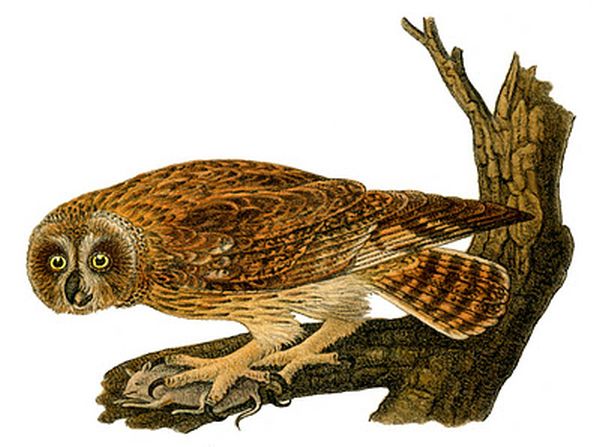
It’s almost Halloween! As your resident writer of horror fiction (check out my latest at The Dark!) this is my time to shine. No one does the intersection of scary and ornithology better than me!
The world of scary birds has been in flux recently, with many of the traditional leaders in the field shifting focus or falling by the wayside. Owls as a group, for instance, have gone from omens of doom to adorable hipster mascots – I blame J. K. Rowling, personally – leaving the nocturnal bird space to the nighthawks. Now, some species of nighthawk have done excellent work. Who can forget the collaboration between H.P. Lovecraft and the Whippoorwill in “The Dunwich Horror“? And the term “goatsucker” is as threatening as it is ridiculous. But nighthawks are the artisanal indie folk purveyors of bespoke superstition in the bird world, and if they get a little bit more famous they’ll probably be snapped up by the same people who make beard oil and kale not scary anymore.
Another traditionally trendsetting group of scary birds that have evolved past their original branding of late are the corvids. Crows and ravens, brilliant and adaptable as always, have capitalized on recent revelations about their exceptional intelligence to expand their fan base beyond approximately a billion goths and teenage neopagans to a broader and more diverse audience. The cunning use of partnerships with adorable children have been especially fruitful in convincing the American public that, Alfred Hitchcock aside, crows are more charming than chilling.
The embattled world population of vultures remains closely linked with death and thus with fear, but under current conditions we should be more scared for them than scared of them.
So who is going to become America’s next top scary bird?
The rails, as a group, are strong contenders. Along with their colleagues the bitterns they are industry leaders in making unnerving noises in swamps at night. Many species of rail are also masters of the art of scuttling, perennially rated one of the top three scariest methods of locomotion. The only thing holding the rails back from ascending to take over the slot recently vacated by owls is that most non-birders seem never to have heard of them, and the fact that the creepiest species are mouse-sized and might be invisible.
The European Starling is already feared by naturalists, and there’s reason to believe that it could capitalize on this to become more generally affiliated with doom and destruction. The Starling’s strength is in numbers, and in a zombie-saturated, drone-paranoid market the fact that you could encounter one – or a hundred – of these ubiquitous birds at any time could easily be crafted into an invasion narrative for the 21st century.
Or maybe the dark horse of this race will be a bright bird we haven’t yet learned to fear. With global warming becoming an increasing threat, range expansions by orioles and hummingbirds or hurricane-borne appearances by tropicbirds and terns could foretell doom in a way that vagrant-happy birders of today can’t yet fully appreciate. Who knows? The time could come when we all speak of the Vermilion Flycatcher with a visceral shudder.













Surely shearwaters must be in the running? Nocturnal, fond of making weird noises on deserted (and inhabited) islands, capable of vomiting oil on unwary interferers with their nests, they could be the basis for some creepy ghost stories if a writer put their mind to it.
Love this post. Another idea for horror with an avian theme could be story about the giant moa-eating eagle of ancient New Zealand switching its diet to another, more familiar bipedal being.
Coots. They are pure evil.
Shearwaters are an excellent group of candidates but they need a lot more publicity before they’ll scare most people.
Given how eager people are to believe in eagle-eating babies, there could definitely be a market for that!
Indeed. The Devil’s Chickens.
Reading this a little late, but–great essay, Carrie. It would be great if Rails became the next scary bird, because that would mean that there is more of them and that they are becoming a presence. Since that seems unlikely to happen, we might consider Woodpeckers. They drill trees, suet, the beams of my porch. What is next? Us?